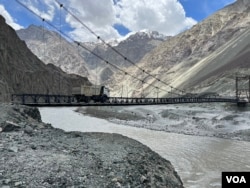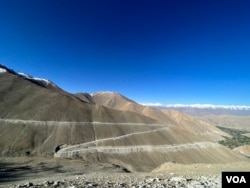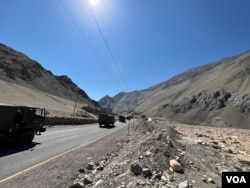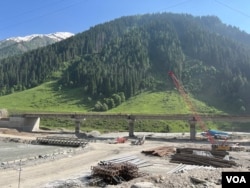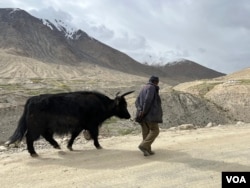Environmental activists and experts are increasingly concerned about the impact that military activity by India, China and Pakistan is having on the unique biodiversity and pristine ecosystems of Ladakh, an Indian-administered region high in the Himalayas.
Simmering tensions between India and China since a deadly border confrontation in 2020 have led to a surge in military deployment, with both sides fortifying their positions to ensure territorial security.
The influx of troops, equipment and infrastructure construction for military purposes has disrupted the fragile Himalayan ecosystem. The unchecked expansion of military bases, roads, helipads and related projects has led to deforestation, habitat fragmentation, and increased air and noise pollution, the experts say.
They point to the rapid degradation of sensitive habitats, such as alpine meadows, wetlands and high-altitude forests, which are home to several endangered species, including the elusive snow leopard, Tibetan antelope and black-necked crane.
“Rare birds such as the black neck crane face disturbances in their habitats due to the heavy military presence on both the Chinese and Indian sides,” said Sonam Wangchuk, an environmentalist and past winner of the Ramon Magsaysay Award – sometimes referred to as the Nobel Prize of Asia.
He and other experts explained that the military activities disrupt the natural breeding patterns, feeding habits and migration routes of these vulnerable species, threatening their survival.
The damage caused by military activity is exacerbating degradation already underway from rising global temperatures attributed in large part to the burning of fossil fuels, which release carbon dioxide, trapping heat from the sun in Earth’s atmosphere.
Mountain regions like the Himalayas are rapidly changing because of the climate crisis, said Doug Weir, policy director at the Conflict and Environment Observatory, a U.K.-based charity working to develop policies that will reduce the environmental harm caused by conflicts and military activities.
Weir told VOA that military activity is estimated to account for 5.5% of all global carbon dioxide emissions.
“Increased military spending and activity help accelerate the climate crisis and the regional changes that are already readily apparent,” he said. “While India has begun to acknowledge a need to reduce its military emissions, efforts are in their infancy. China's views on military emissions reductions remain unclear.”
Wangchuk argued in an interview that the military buildup in Ladakh is contributing significantly to the warming climate.
“The Indian side alone emits approximately 300,000 tons of CO2 [carbon dioxide] annually, considering the substantial amount of fuel transported and burned for military operations,” he said. “Similarly, the emissions would be slightly higher on the Chinese side and somewhat lower on the Pakistani side, resulting in nearly 1 million tons of CO2 being emitted each year in this triangular junction.
“Pollution doesn’t know borders,” Wangchuk added, urging governments to prioritize the well-being of soldiers and civilians alike, irrespective of their nationalities. He compared the disputes between nations “to squabbling neighbors fighting over a fence while an impending avalanche threatens them both.”
Not only the wildlife is threatened. A recent study indicated that if temperature trends continued, the Himalayan glaciers might disappear entirely, “having a significant impact on regional water supplies, hydrological processes, ecosystem services and transboundary water sharing.”
Ladakh is particularly vulnerable to the threat, Wangchuk said. “Its glaciers play a crucial role in sustaining not only the local population but also communities across northern India and northern Pakistan. Consequently, many villages are teetering on the brink of becoming climate refugees.”
In a media report last year, the village of Kumik witnessed residents abandoning their homes and relocating to other parts of Ladakh because of water scarcity.
On a more positive note, Wangchuk said efforts are underway to collaborate with the Indian army to introduce passive solar-heated shelters, which have proven effective in significantly reducing emissions.
“These innovative zero-emission buildings have been successfully tested during two harsh winters, ensuring soldiers' warmth without relying on conventional fuel sources,” he said, calling for China and Pakistan to adopt similar environmentally friendly practices.





